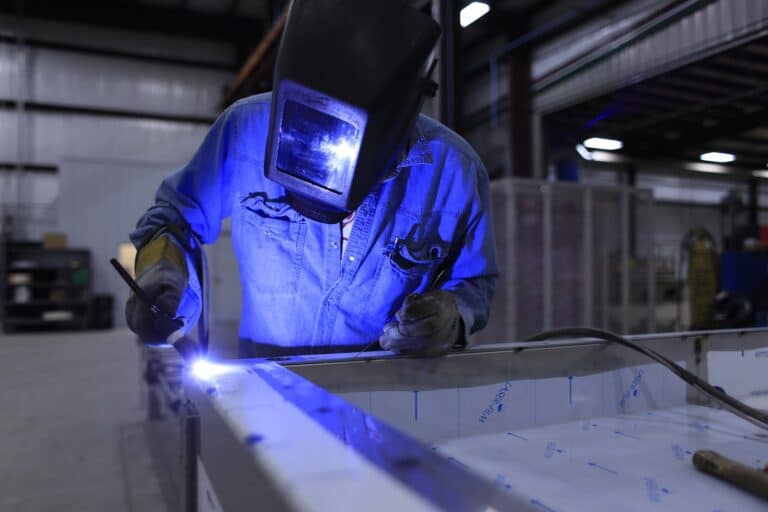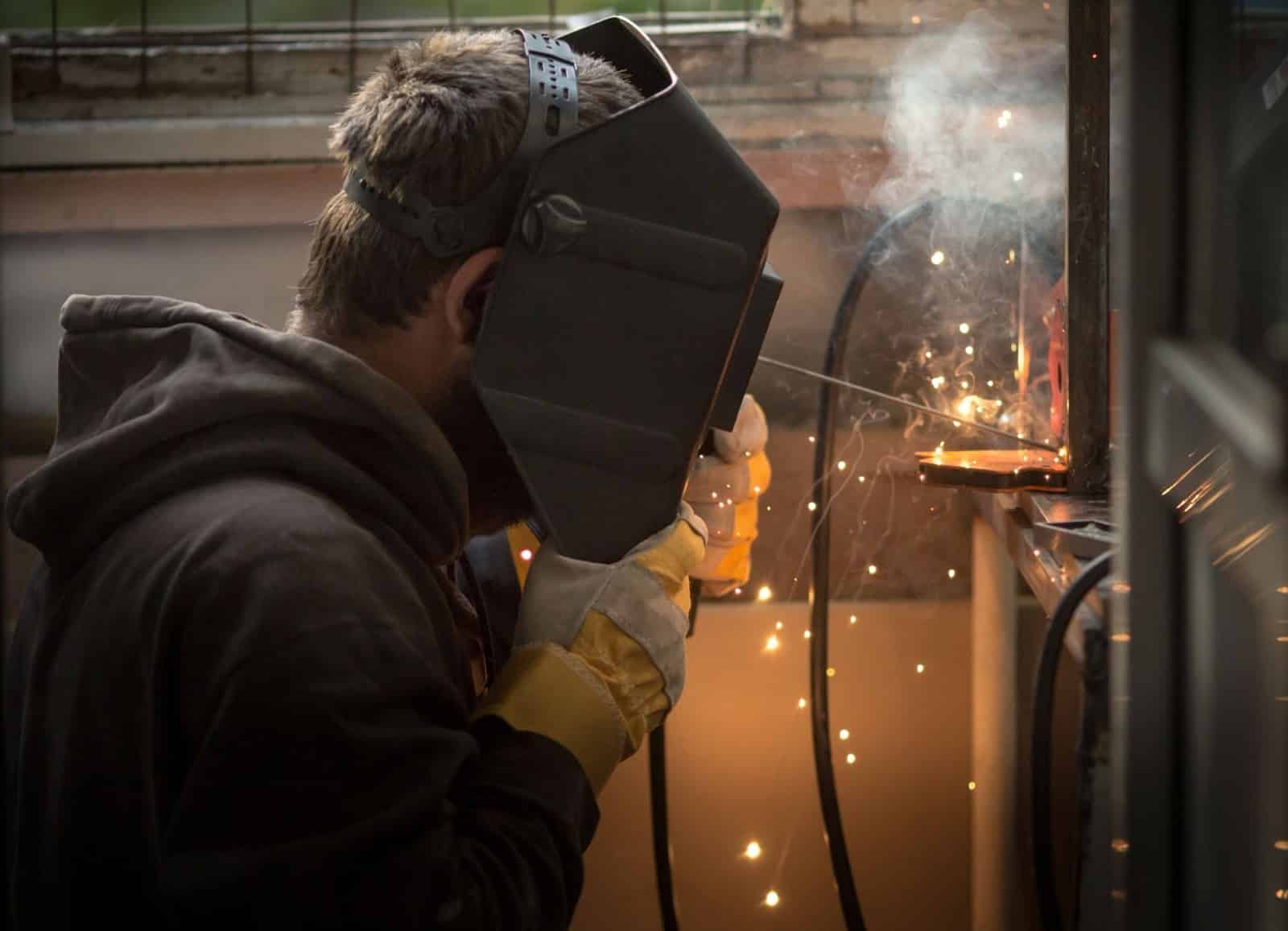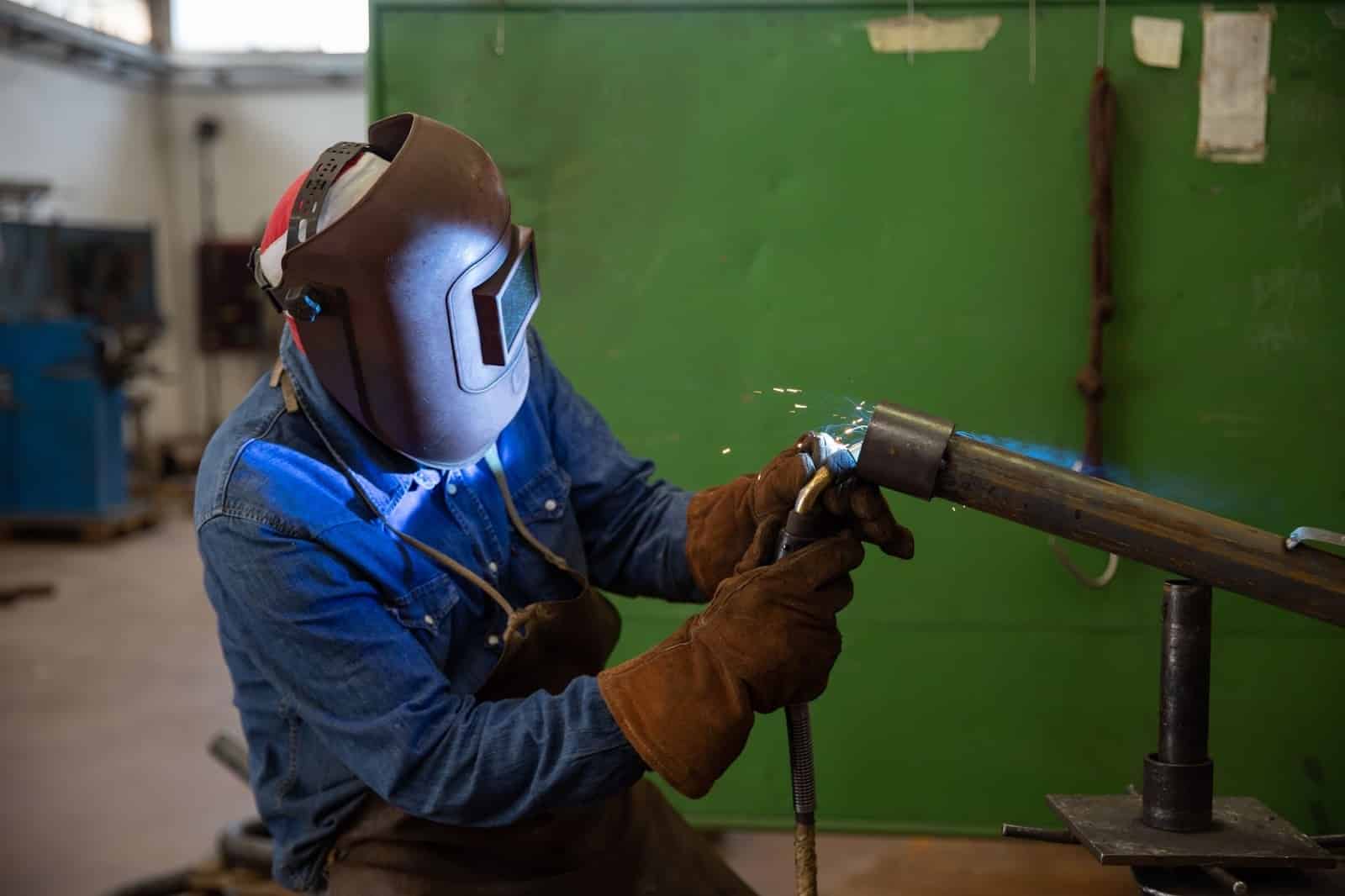If you’re aiming for precision, beauty, and strength in your welds, few methods can match GTAW welding, better known as TIG welding (Tungsten Inert Gas welding). It’s the process of choice for professionals who need clean, high-quality welds on stainless steel, aluminum, and exotic metals.
But mastering GTAW starts with understanding the equipment. Each tool in a GTAW setup plays a specific role in ensuring a stable arc, perfect shielding, and superior weld control. Trusted welding equipment suppliers like Yeswelder and others provide complete TIG welding machine packages designed for both precision and durability.
This guide walks you through every essential component of GTAW welding equipment, from the power source and torch to gas systems and safety gear, so you can weld with precision and confidence.

What Is GTAW Welding?
GTAW stands for Gas Tungsten Arc Welding, a process that uses a non-consumable tungsten electrode to produce the weld.
Unlike MIG or stick welding, where the electrode melts and becomes part of the weld, GTAW relies on a separate filler rod (optional) and a shielding gas (typically argon) to protect the molten pool from contamination.
This method allows for precise, clean, and aesthetic welds — which is why most welding machine suppliers recommend it for industries such as aerospace, piping, and automotive fabrication.
Key Components of GTAW Welding Equipment
A proper GTAW setup requires several components working in harmony. Let’s break down the essential equipment piece by piece.
1. Power Source (Welding Machine)
The power source is the heart of any GTAW setup. It supplies the electrical energy to generate the arc between the tungsten electrode and the workpiece.
Types of Power Sources:
- DC (Direct Current):
Used for steels, stainless steels, titanium, copper, and nickel alloys. Provides smooth, stable arcs and deep penetration. - AC (Alternating Current):
Used primarily for aluminum and magnesium. The AC cycle alternates between electrode-positive (cleaning action) and electrode-negative (penetration), removing oxide layers from aluminum surfaces. - AC/DC Combo Machines:
Most modern TIG welders are AC/DC capable, ideal for working with a wide range of metals.
Features to Look For:
- Adjustable amperage control.
- High-frequency start (for touch-free arc ignition).
- Pulse control for precision on thin materials.
- Foot pedal or fingertip control compatibility.
Pro Tip: Choose a welder with at least 200 amps if you plan to weld both thin and thick materials.
2. TIG Torch (GTAW Torch)
The torch delivers the current and shielding gas to the weld area. Its design determines comfort, control, and performance.
Main Parts of a TIG Torch:
- Handle: Insulated for grip and comfort.
- Tungsten Electrode: Creates the arc (non-consumable).
- Collet & Collet Body: Holds the tungsten in place.
- Ceramic Cup (Nozzle): Directs shielding gas around the weld pool.
- Back Cap: Seals the rear end and holds the tungsten securely.
Torch Cooling Types:
- Air-Cooled Torch: Simpler, more portable, and ideal for low to medium amperage (under 200A).
- Water-Cooled Torch: Has built-in cooling lines to prevent overheating during prolonged or high-amp welding.
Torch Sizes:
Common torch designations include WP-17 (medium-duty air-cooled), WP-26 (heavy-duty), and WP-20 (water-cooled).

3. Tungsten Electrodes
Tungsten electrodes are critical for arc stability and weld quality. Tungsten has the highest melting point of any metal (6,170°F / 3,410°C), which makes it perfect for maintaining a steady arc.
Types of Tungsten Electrodes:
- Pure Tungsten (Green): Best for AC welding on aluminum.
- 2% Thoriated (Red): Most common for DC welding; excellent arc starting.
- 2% Ceriated (Grey): Great for low amperage DC and AC welding.
- 2% Lanthanated (Blue): Universal option; works for both AC and DC.
Tip Shapes:
- Ball Tip: For AC welding on aluminum.
- Pointed Tip: For DC welding on steels and stainless steels.
Pro Tip: Always grind tungsten lengthwise, not sideways, to ensure a stable arc.
4. Shielding Gas Supply System
In GTAW, shielding gas is crucial, it protects the weld pool and tungsten from oxidation and contamination.
Common Shielding Gases:
- Argon: Most widely used; produces stable arcs and smooth welds.
- Helium: Provides deeper penetration and faster travel speeds but costs more.
- Argon-Helium Mix: Used for thicker metals or high-heat applications.
Essential Gas Equipment:
- Cylinder: Stores compressed shielding gas.
- Regulator and Flowmeter: Controls gas pressure and flow rate (usually between 15–25 CFH).
- Gas Hose: Transfers gas from the regulator to the torch.
Pro Tip: Keep gas lines clean and leak-free; even minor leaks can cause porosity in welds.
5. Filler Rods
While GTAW can weld autogenously (without filler), most projects require filler metal to strengthen the joint.
Common Filler Rods:
- ER70S-2: For mild and carbon steel.
- ER308L: For stainless steel.
- ER4043 or ER5356: For aluminum alloys.
Choose a filler that matches your base metal type and thickness.
Filler Rod Diameter Guide:
- Thin sheet metal: 1/16 inch (1.6 mm)
- Medium plate: 3/32 inch (2.4 mm)
- Heavy plate: 1/8 inch (3.2 mm)
Pro Tip: Keep filler rods clean and dry, store them in sealed tubes to prevent oxidation.

6. Ground Clamp and Cables
The ground clamp completes the electrical circuit. It connects the workpiece to the negative or positive terminal, depending on the polarity used.
Always use heavy-duty, flexible cables rated for your machine’s amperage. Secure connections prevent overheating and voltage drops.
7. Foot Pedal or Fingertip Control
One of the biggest advantages of GTAW welding is precise amperage control. A foot pedal or torch-mounted fingertip control lets you adjust current output dynamically during welding.
- Foot Pedal: Ideal for bench or stationary work. Provides smooth current control.
- Fingertip Remote: Perfect for fieldwork or overhead welding where pedals are impractical.
8. Cooling System (Optional)
If you use a water-cooled torch, you’ll need a cooling system. It circulates coolant through the torch and hoses to prevent overheating.
Modern systems combine pumps, reservoirs, and radiators into a single unit. Always use manufacturer-recommended coolant, not plain water, to avoid corrosion or algae buildup.
9. Welding Table and Accessories
A stable welding table with a grounded surface ensures both safety and precision.
Helpful Accessories Include:
- Torch Holders – Keeps the torch safe between welds.
- Magnetic Clamps – Holds workpieces at precise angles.
- Gas Lens Kit – Improves shielding gas coverage and reduces turbulence.
- Tungsten Grinder – For accurate, repeatable tungsten tips.
10. Safety Equipment
GTAW produces intense UV radiation, heat, and fumes — safety gear is non-negotiable.
Must-Have Safety Equipment:
- Auto-darkening welding Helmet: Shade range 9–13 for TIG welding.
- Welding Gloves: Thin, heat-resistant TIG gloves allow finger flexibility.
- Protective Jacket or Sleeves: Flame-resistant leather or Kevlar.
- Respirator or Fume Extractor: For enclosed or poorly ventilated spaces.
- Welding Curtain: Protects bystanders from arc flash.

Maintenance Tips for GTAW Equipment
- Clean your torch and gas cups regularly to prevent contamination.
- Replace worn-out collets or ceramic cups.
- Check hoses and cables for cracks or gas leaks.
- Sharpen tungsten electrodes properly before each job.
- Keep your work area and table grounded and free from flammable materials.
Proper maintenance not only extends equipment life but also ensures consistent weld quality.
Advantages of a Well-Maintained GTAW Setup
- Flawless Weld Quality: Minimal spatter and clean bead appearance.
- Greater Control: Adjustable heat and precise puddle manipulation.
- Versatility: Suitable for a wide range of metals and thicknesses.
- Durability: Well-maintained tools ensure long-term performance.
Final Thoughts
Precision welding is all about control and consistency. Investing in a quality TIG welding machine from a trusted welding equipment supplier guarantees both. Whether you’re a workshop professional or an advanced hobbyist, working with the right tools — from tungsten welding electrodes to reliable TIG welder supplies — ensures your welds are clean, strong, and built to last.
For businesses, sourcing through a reputable welding supply company distributor provides long-term value and reliable support. In the hands of a skilled welder, GTAW equipment doesn’t just fuse metals — it fuses precision and craftsmanship.
Related Articles
What Does GMAW Stand For? Understanding the Basics and Benefits
TIG Welding Equipment: The Wholesale Solutions
What Gas is Used for TIG Welding Aluminum? The Role of Argon and Helium



